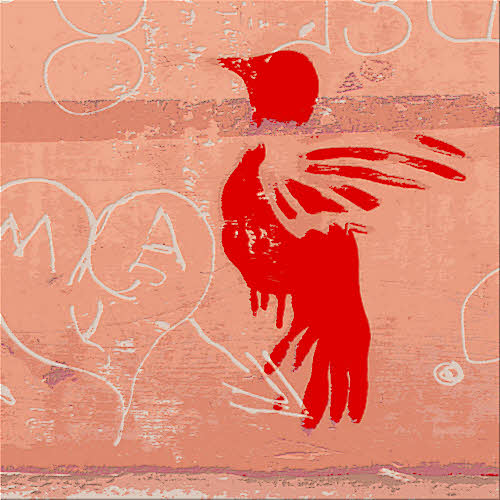Essentials for Wilderness Survival, Part 3: Cover your head.

You never know what might be up there aiming its anus your way.
Hat advantages:
- Keeps your head warm.
- Helps maintain your disguise.
- Deflects ozone rays, which have been known to rot rubber tires.
- All of the above.
- Other.
- Makes you look like a real stalker (if wearing the optional sunglasses).
In Canada, these are called toques. A toque is like a regular knit cap, or watch cap but one that has done time, and some of them are real bad boys.
For example, the cast iron variant with a steel wool insulating liner. This is threaded inside and screws onto your head. It's called a torque, or rotating force cap, and makes your head smaller by one to three sizes. And pointy.
Hat disadvantages:
- Leaves permanent rust stains.
- Attracts people your mother warned you about.
- Hard to unscrew at bedtime.
- Requires sleeping with head pointed north (if it won't come off).
- Makes you easy to spot on surveillance tapes.
- Has no known advantages.
Generally speaking, for backpacking use, a nougat hat (also known as noughat, or noogie hat) is probably more practical than an iron toque.
Noughat is a compound word coming from Occitan pan nogat ("edible headwear"), which comes in turn from the Latin nux gatum "clown nuts" or "nut jobs", from the funny hats worn by Imperial Roman Court jesters, who were often roasted as an encore and then served as dessert.
More broadly, nux gatum was an ancient variety of humorous but tasty edible made of honey, roasted nuts, whipped egg white, and fruit. All ingredients combined, well-beaten, rolled, baked, and air dried for six months, form a tough sort of leather whose consistency ranges from soft and chewy to stiff and almost crunchy, while remaining bendable.
After processing, this edible leather was shaped into a variety of headgear that first saw use in gladiatorial combats, but slowly became obsolete before fading out entirely during the High Middle Ages as wool production increased and people decided to spend more time recreating with sheep.
Lately, with the trend toward super-ultralight, multiple-use backpacking equipment, noughats have been resurrected and are now appearing on some of the more fashionable long-distance trails.
Most of this headwear is made by BlakLava, a small company specializing in what they call the BlakLava Baklava Balaclava Helmet. This is a munchable version of the famous balaclava helmet or monkey cap, so named because of the way it makes you look, and by the kind of attention it attracts.
In the U.S. the balaclava helmet (or more simply, just balaclava) is normally called a ski mask, even if you don't ski but only use it while robbing convenience stores. It is something like a large, blunt tube sock for a person who has only one enormous and strangely shaped foot, but it works great worn over the head, especially if you have only one of them.
You can think of the balaclava helmet as a form-fitting, free-floating hood that covers the head, neck and face. It can be worn rolled up as a cap or pulled down to cover the ears and hide the face, which makes it popular with drug dealers and terrorists too.
The BlakLava Baklava Balaclava Helmet comes in three versions:
- Pure BlakLava: White, made with beaten egg whites and honey.
- Woodsy BlakLava: Brown, made without egg whites and having a firmer, crunchier texture.
- Bavarian BlakLava: Rich and chocolaty, with hazelnuts and almonds.
Baklava balaclava helmets are effective against hunger, cold, and wind, and they also deflect incoming bird and squirrel poo.
If you are nailed by a pigeon or tree rat, simply rinse and pat your hat dry before consuming it. (USDA approved.)